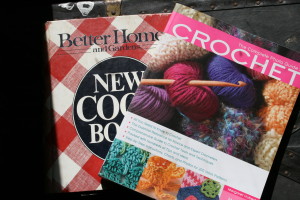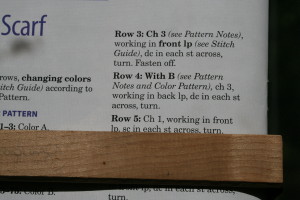 One of the statements I find many crocheters stating is that they do not know how to read a pattern. This isn’t surprising, nor is it uncommon. Many of us learned the stitches and techniques from friends or family members (and honestly, descriptions of crocheting can be difficult to write). It is a visual skill; those that are self taught probably used photos and maybe even videos; describing where to place a hook into a stitch without a visual cue could be quite daunting.
One of the statements I find many crocheters stating is that they do not know how to read a pattern. This isn’t surprising, nor is it uncommon. Many of us learned the stitches and techniques from friends or family members (and honestly, descriptions of crocheting can be difficult to write). It is a visual skill; those that are self taught probably used photos and maybe even videos; describing where to place a hook into a stitch without a visual cue could be quite daunting.
I’m hoping to add a little clarity in the world of reading patterns over the next couple of posts, beginning today with the most common; standard written.
Standard written patterns are similar to cookbook recipes; the ingredients are listed out and then there is a paragraph giving you step by step directions on how to complete the dish. Patterns give you the materials needed and step by step directions to complete the project. Major difference, you probably learned to cook at the hip of someone else so you learned all the abbreviations and basic skills like sauté and chop while they showed you how to do it. Crochet is a little slower process and no one is probably how to decease then chain and skip a stitch while you were in the process of completing a pattern.
So where to start. First don’t expect that just because you know all the stitches that reading a pattern should come easy, it is like knowing all the basic cooking skills and now reading a pattern to make a soufflé; take baby steps. First we need to understand the abbreviations, almost every crochet magazine and book and even good patterns will have a list of all the abbreviations and what they mean (note: this will also include special stitches and techniques), and many will even have a tutorial or photo to demonstrate the stitch to assist you further. The most common abbreviations are:
ch- chain
dc- double crochet
sc- single crochet
sk- skip
sl st- slip stitch
st(s)- stitch(es)
yo- yarn over hook
Note: This post is written in American crochet, short hand for other countries may (and often does) differ.
So now it is a step by step process of going line by line over the directions. This can seem daunting and slow, especially since if you’re like me crochet is something to relax you, but typically you can see the pattern in the stitches in the first couple of rows and you then use the pattern as a reference when you get to places that have some change. To make it a little less overwhelming (and assist in keeping your place), I have met several people that use highlighters when they complete a row, or place a check mark by the row, or others that use a sticky note just below the row they are on and move it down as they progress in the pattern.
Even if this doesn’t aide in your approach to patterns, not to fret, there are other ways to address reading patterns, such as Charts or Stitches

